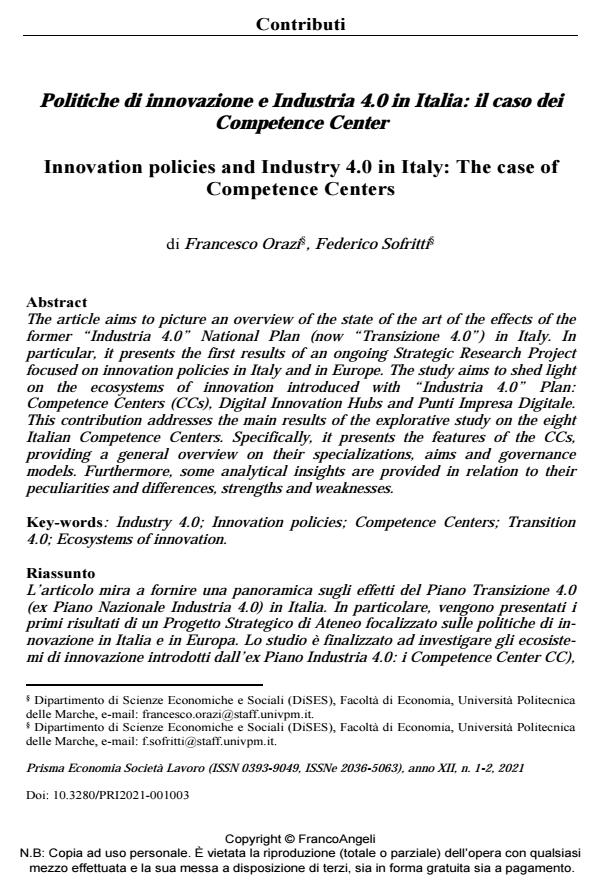Innovation policies and Industry 4.0 in Italy: The case of Competence Centers
Journal title PRISMA Economia - Società - Lavoro
Author/s Francesco OraziS, Federico Sofritti
Publishing Year 2023 Issue 2021/1-2
Language Italian Pages 14 P. 24-37 File size 246 KB
DOI 10.3280/PRI2021-001003
DOI is like a bar code for intellectual property: to have more infomation
click here
Below, you can see the article first page
If you want to buy this article in PDF format, you can do it, following the instructions to buy download credits

FrancoAngeli is member of Publishers International Linking Association, Inc (PILA), a not-for-profit association which run the CrossRef service enabling links to and from online scholarly content.
The article aims to picture an overview of the state of the art of the effects of the former "Industria 4.0" National Plan (now "Transizione 4.0") in Italy. In particular, it presents the first results of an ongoing Strategic Research Project focused on innovation policies in Italy and in Europe. The study aims to shed light on the ecosystems of innovation introduced with "Industria 4.0" Plan: Competence Centers (CCs), Digital Innovation Hubs and Punti Impresa Digitale. This contribution addresses the main results of the explorative study on the eight Italian Competence Centers. Specifically, it presents the features of the CCs, providing a general overview on their specializations, aims and governance models. Furthermore, some analytical insights are provided in relation to their peculiarities and differences, strengths and weaknesses.
Keywords: Industry 4.0; Innovation policies; Competence Centers; Transition 4.0; Ecosystems of innovation.
Francesco OraziS, Federico Sofritti, Politiche di innovazione e Industria 4.0 in Italia: il caso dei Competence Center in "PRISMA Economia - Società - Lavoro" 1-2/2021, pp 24-37, DOI: 10.3280/PRI2021-001003